My name is Elisa and in 2014 having inherited the property from my father, I decided to maintain the centenary traditions of this region by cultivating grapes and making wine. I have converted the mansion into an “agriturismo” and the rest of the property in boutique farm, which started its activity in 2015.
With a boutique-sized farm, as mine, everything is done either by hand or in small-production scale.
All the seasonal care of the vineyards is done almost entirely by being directly involved, because this is my way to gain the knowledge and expertise in order to improve a winemaking approach and enhance the wine-identity of this territory.
It is my choice to be a small and personal winery.
Thus was born the idea of converting the land surrounding the property into vineyards, re-establishing the wine-growing vocation of the past and starting a tourist hospitality in the renovated farmhouse.
Today the company consists of three hectares of vineyards, cultivated with Sangiovese, Famoso and Riesiling, one hectare of vine rootstock and six hectares of woodland and we are a rural family farm.
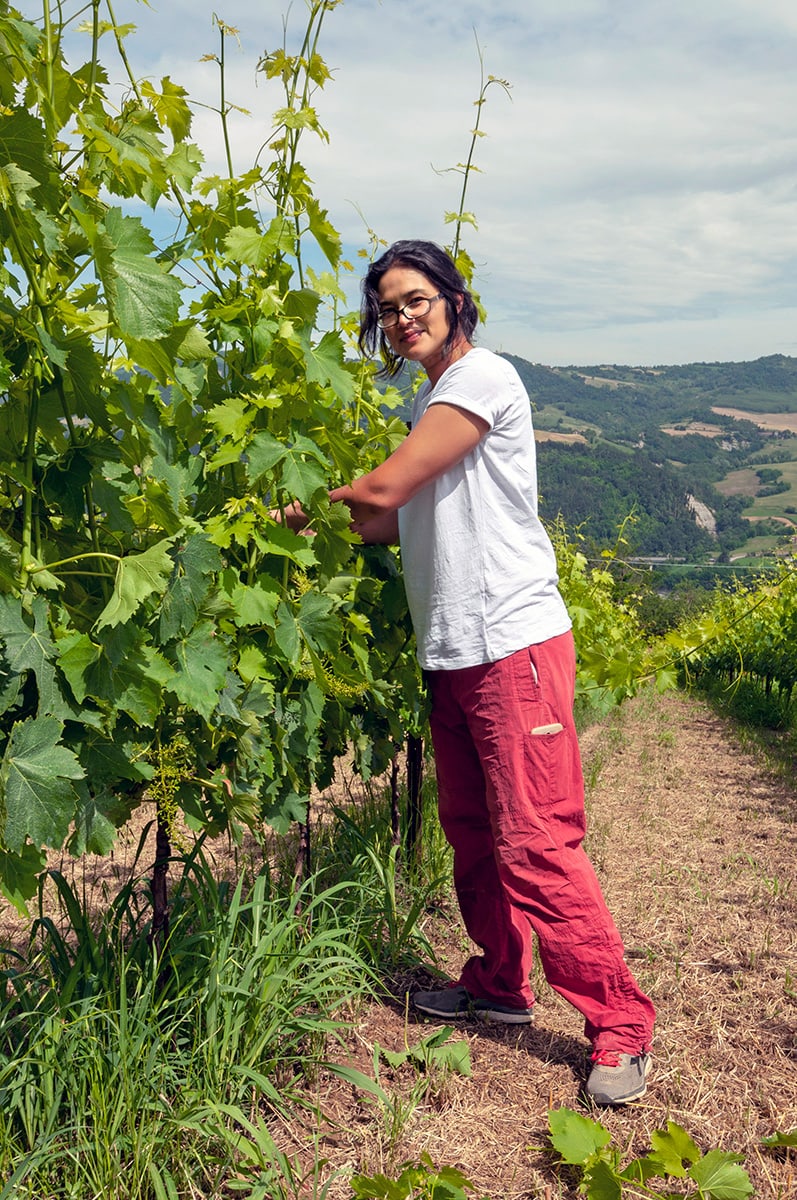
The Vineyards
Among indigenous and international grape varieties, with their best expressions in this territory, were chosen Sangiovese, Famoso and Riesling.
With support of the agronomist Dott. Remigio Bordini, 3 hectors of vineyards were planted.
Sangiovese is one of the oldest Italian grape varieties. While its plantings are found worldwide, the grape homeland is central of Italy.
The origin of Sangiovese name seems to come from the latin expression “ sanguis Jovis”, the blood of Jove ( Jupiter), where Jove also stands for a mountain in the Emilia-Romagna region (east-central Italy).
The first documented mention of Sangiovese was in the writings of Solderini, an Italian agronomist who wrote in 1600 a “Treatise on the Cultivation of the Vineyard”, who identified the grape as “ Sangiogheto”, however it is claimed that Sangiovese grapes was used in the Etruscan period to make wine.
The Sangiovese variety, over the course of centuries, has undergone a substantial amount of clonal variation because this assured value is to express the uniqueness identity of the territory where is cultivated.
The name of our Sangiovese clone planted is RBL1. This clone has been studied and selected for its specific qualities by our agronomist Remigio Bordini.
One of remarkable attributes of this Sangiovese clone is the a small and thin cluster that allows a uniform grape ripening and prevent powdery mildew. Moreover the small berry size with thick skin foster the sugar concentration and exalts the aromas.
Sangiovese Vineyard
- Extension: 2.3 Hectors
- Grape variety: Sangiovese
- Rootstock: Gravesac
- Density of plantation: 5000 plants per hector
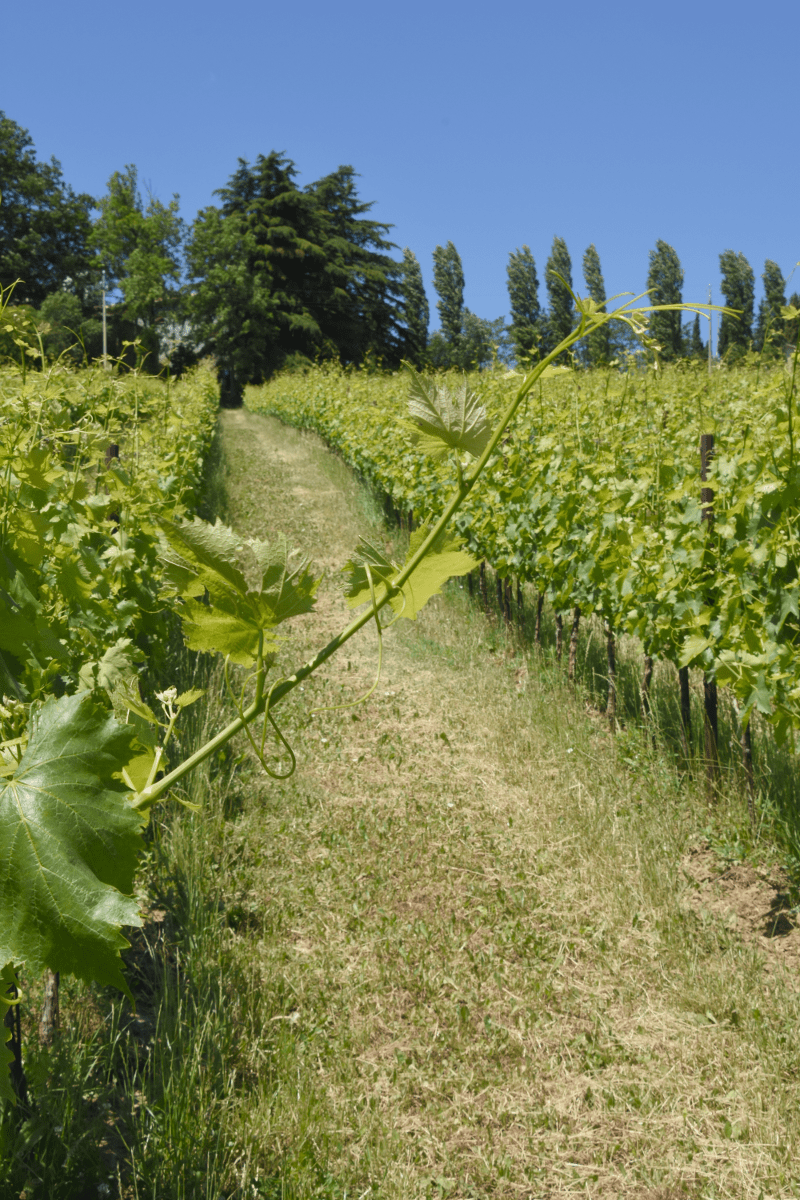
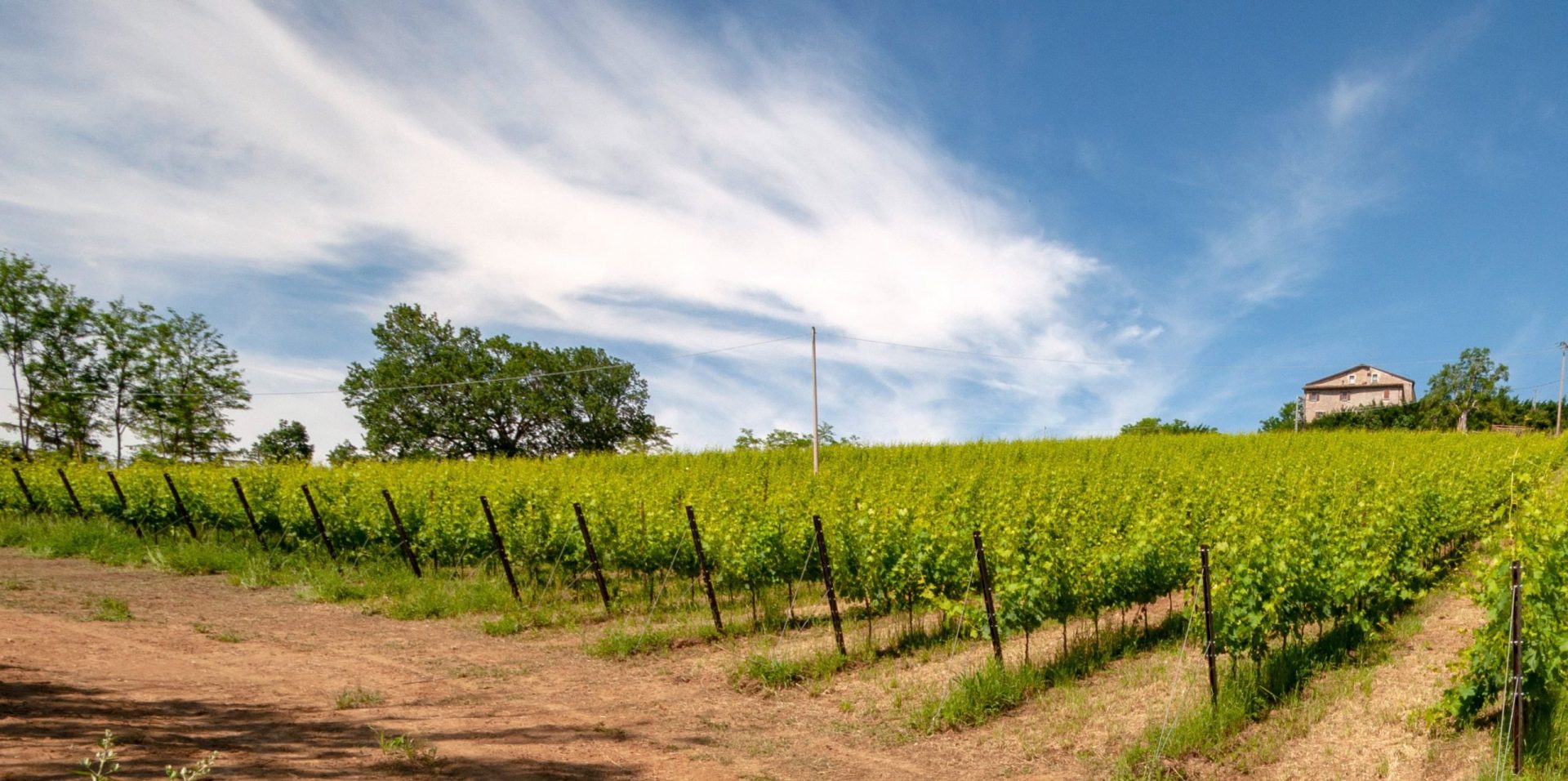
White grape vineyard
- Extension: 0, 80 Hectors
- Grape variety: Famoso and Riesling
- Rootstock: TK5BB & S04
- Density of plantation: 5000 plants per hector
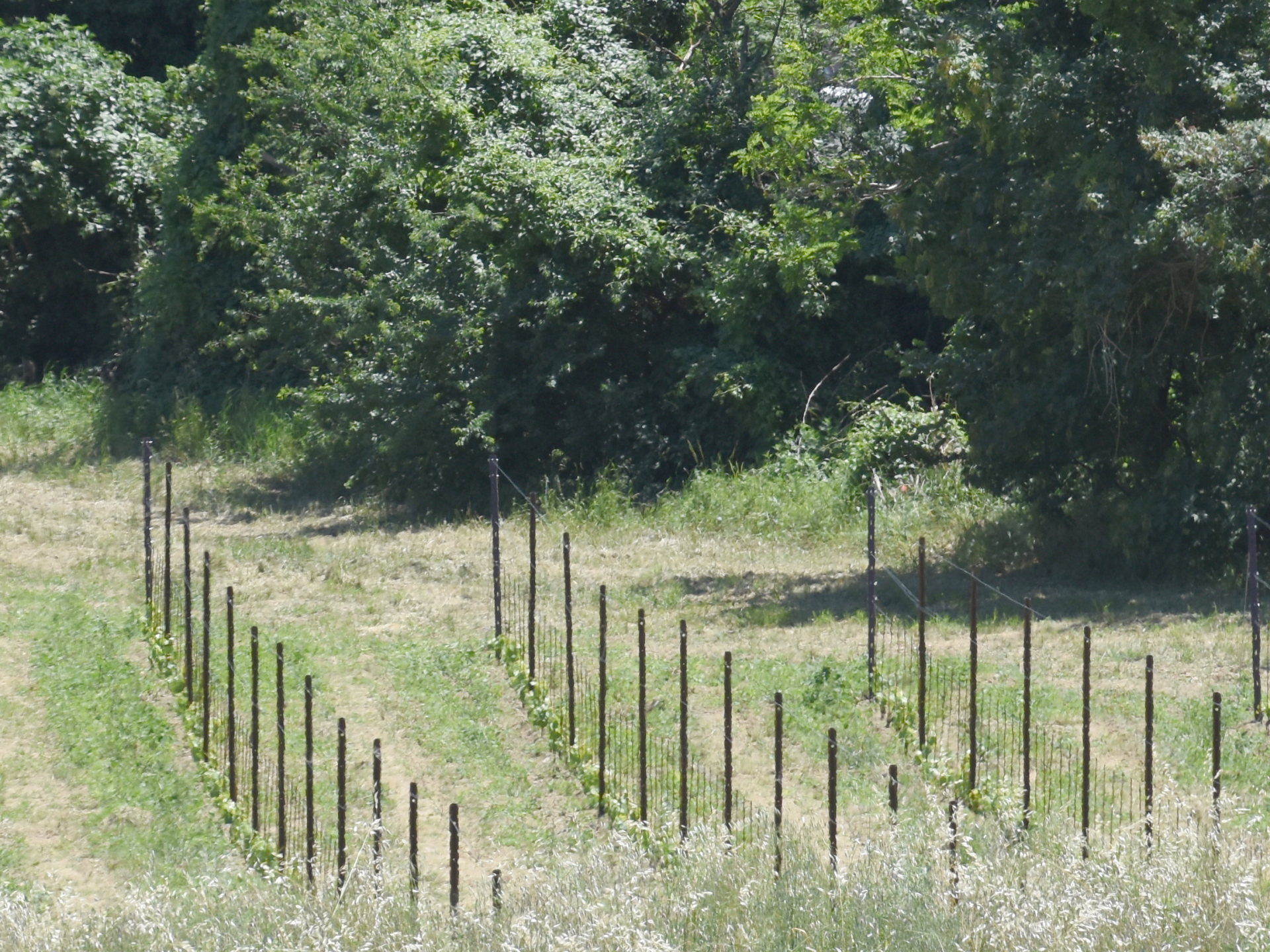
On April 4, 2020 we planted about 6500 meters of white grape vines in a plot facing south-east with a loamy-sandy soil texture.
The vines chosen were the Famous and the Riesling Italico, the first a little known and widespread in Romagna, the second best known and not very widespread in these areas.
Famoso
The Famoso is a vine present exclusively in Romagna registered in the National Register of Varieties in 2009.
It is claimed that the first documents where Famoso appears are dated back to 1437. In XIXth century its presence was confirmed on the hills of Cesena in Emilia-Romagna region.
During the last century, however, there was a contraction in the cultivation of the Famoso to the point of extinction.
It was rediscovered in early 90’s in the small village of Montesasso (province of Cesena), studied and identified by the university of Bologna. The original vineyard was planted next to the ancient Montesasso church where the wine was served for the religious ceremonies
From that moment, the cultivation of the Famoso began to spread in the provinces of Romagna and to give vinifications with very interesting results
The Famoso vine has medium-high vigour, good fertility, discrete in its basal buds. With spurred cordon training systems (less widespread training for white grape varieties) its productivity is medium. It is particularly suitable in foothills and hills where it expresses its maximum oenological potential.
It is characterized by a bunch of medium size, conical shape, often with a wing and basically loose. The berry is of medium size, with a green-yellow skin, rather thick and consistent, pruinose.
Il Famoso produces wines characterized by a notable intensity of aromas, a very intense nose with sweet floral notes, exotic fruit, dried fruit drupe. The taste shows medium acidity, good softness and structure.
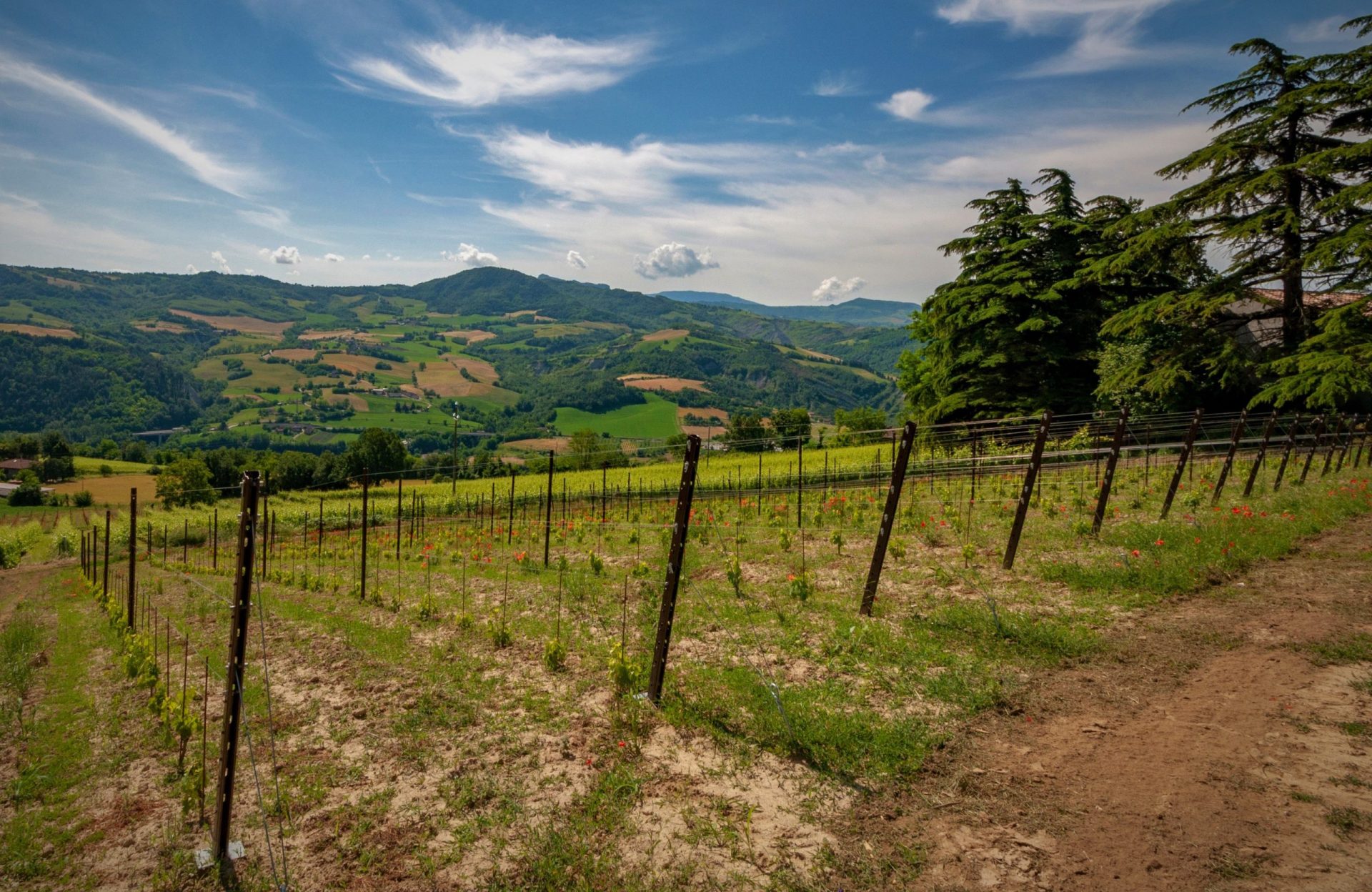
Riesling
Riesling is considered one of the great noble white grape varieties.
“Riesling is widely known and is grown internationally. This grape is characterized by great acidity and sweetness. Cultivated on the hills with mineral soils and cool microclimate it offers its best expression. In Italy it was officially registered in 1970 but its cultivations began in XIXth century.
Today the total surface in Italy planted with Riesling is 450 hectors.”
Italian Riesling has small, cylindrical, often winged and compact bunches. The berry of medium size, spherical and thin skin of golden yellow color.
Straw-yellow colored wines with greenish hues are obtained. The olfactory range is complex, with floral and slightly fruity aromas. One of its main characteristics is the marked acidity accompanied by a high concentration of sugars. This allows multiple declinations from still wines, sparkling wines of great immediacy and freshness to more structured wines subject to aging while keeping the aromas unchanged.
Try our wine and buy it directly on our shop
We produce organic wine produced with selected grapes which we personally take care during all the season.
